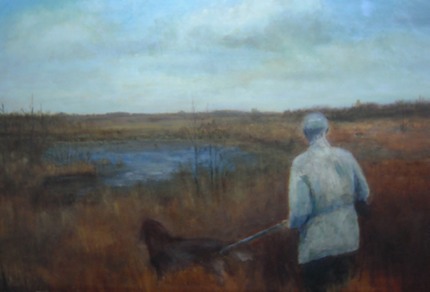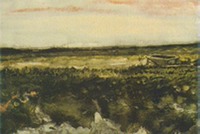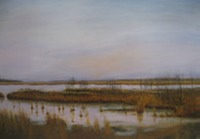bert feringa grandfather hunting in the amsterdam field 2007

Vincent van Gogh arrived on 3 october 1883 in New Amsterdam. The small village was a peat colony founded by Amsterdam investors to exploit the peat in the vast moors in the neighbourhood. Even today the area is called the Amsterdam Field. On the barge some fellow travellers had told him that he could travel by barge all the way to the German border near the Black lake. This was not true. The canal ended in nowhere a few kilometers beyond New Amsterdam. So he stayed in New Amsterdam and never saw the magical Black Lake about 10 kilometers to the east. Most probably at that time the once 100 hectares large Black Lake was already drained because of the advancing canals from the north and west. During van Gogh's stay in New Amsterdam the inaccessible area was scarcely inhabitated by small settlements of German immigrants who cultivated buckwheat on the peat-moor. It took more than 10 years before the canal finally reached the German border and the peat colony Blacklake was founded. During WW I the demand for peat was high and the village became a booming place. It was called "California of Drenthe". My ancestors moved to Blacklake during that period. After WW I the role of peat as fuel was replaced by coal and the cultivation of the peat fields declined rapidly. It caused great poverty and unrest in the area. The positive side of it is that today we can enjoy the beauty of the remaining peat moors. They are a National Park now. In my schoolyears I wandered for days through that paradise together with my hunting grandfather. And as a dreamy boy I had the same thoughts as young Van Gogh almost a century earlier : " what tranquillity, what breadth, what calm there is in nature here. What I find beautiful is everywhere here. That’s to say, there is peace here".




